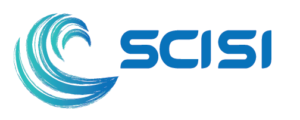How your business can benefit from offering health savings accounts to employees –
The cost of offering health care to employees has continued to skyrocket. Many companies have had to pass along all or part of the premium increases to workers or increase plan deductibles in order to maintain a competitive busines posture while continuing to offer the benefit of health insurance.
A health care financing option that potentially provides a solution to the complex challenge of offering affordable health insurance to employees is the health savings account (HSA).
These types of accounts are very popular with employees, says Sandy Coventry with SCISI. HSAs make health insurance available to a greater number of people and that many professional-level employees recognize the tax advantages and empowerment potential of account ownership.
According to information gathered by America’s Health Insurance Plans; as of January 2017, 52 health insurance providers reported 21.8 million HSA/CDHP enrollees, up from 20.2 million in 2016.
Smart Business spoke with Coventry about the business advantages of offering HSAs and why CEOs might want to include this option as part of his company’s benefits plans.
Why should a CEO consider including HSAs as part of a comprehensive health care benefit plan?
The first thing to consider is the cost savings. HSAs are offered when an employee is covered by a high-deductible insurance plan. These types of plans often offer premium savings to the company and potentially the employee, depending upon how the premium sharing is allocated.
Why would an employee want an HSA?
The premium savings from a highdeductible insurance plan often enables employees to cover their entire family, or it allows more employees to participate. The employee can ‘bank’ a portion of the premium savings into an HSA and use that money to meet the deductibles of the plan. Additionally, employee contributions to the account are tax deferred.
For many employees, especially those in higher tax brackets, it’s an opportunity to save money on premiums and lower their taxes. Any excess funds earn interest and continue to accumulate until they are needed, and costs at medical provider offices or pharmacies are paid right out of the account with a debit card. It’s like getting a raise for employees who have few medical expenses in a year.
What types of criteria are necessary to offer an HSA to employees?
Employees must meet the following criteria:
■ The employee must be covered under a qualified high-deductible health plan. The 2018 minimum annual deductible for self-only HDHP coverage will be $1,350 (a $50 increase from 2017), and the 2018 minimum annual deductible for family HDHP coverage will be $2,700 (a $100 increase from 2017)
■ The employee must not be covered by another health insurance plan, either as an employee or a dependent, unless it is another high-deductible health plan or specific limited-coverage plans such as dental, vision, accident, hospital indemnity or long-term care insurance.
■ The employee may not be enrolled in Medicare under Coverage A or B.
■ The employee cannot be claimed as a dependent on another person’s tax return.
Please note: The 2018 annual HSA contribution limit for individuals with self-only HDHP coverage will be $3,450 (a $50 increase from 2017), and the 2018 limit for individuals with family HDHP coverage will be $6,900 (a $150 increase from 2017).
What are the steps for putting an HSA in place?
The first step is to research the most cost effective health plan options that can augment or replace the company’s current medical plan offerings. Then decide on a budget for contributions to the employees’ HSA. Most employers use all or some portion of the premium savings as a funding mechanism for their employee’s HSAs. The company contributions act as an incentive for employees to enroll in the high deductible health plans and the HSAs.
The last and most important step is to educate the employees so that they understand the risks of having a high-deductible health plan and the benefits of having an HSA to pay for out-of-pocket expenses.
Payroll stuffers, educational materials and enrollment meetings are valuable tools to use in successfully implementing a new HSA offering. The key is keeping it simple for employees by providing clear and concise information so that they can make the most informed decision about their health care plan.
Interviewed by Leslie Stevens-Huffman, SmartBusiness San Diego, updated 2018 to reflect current statistics


